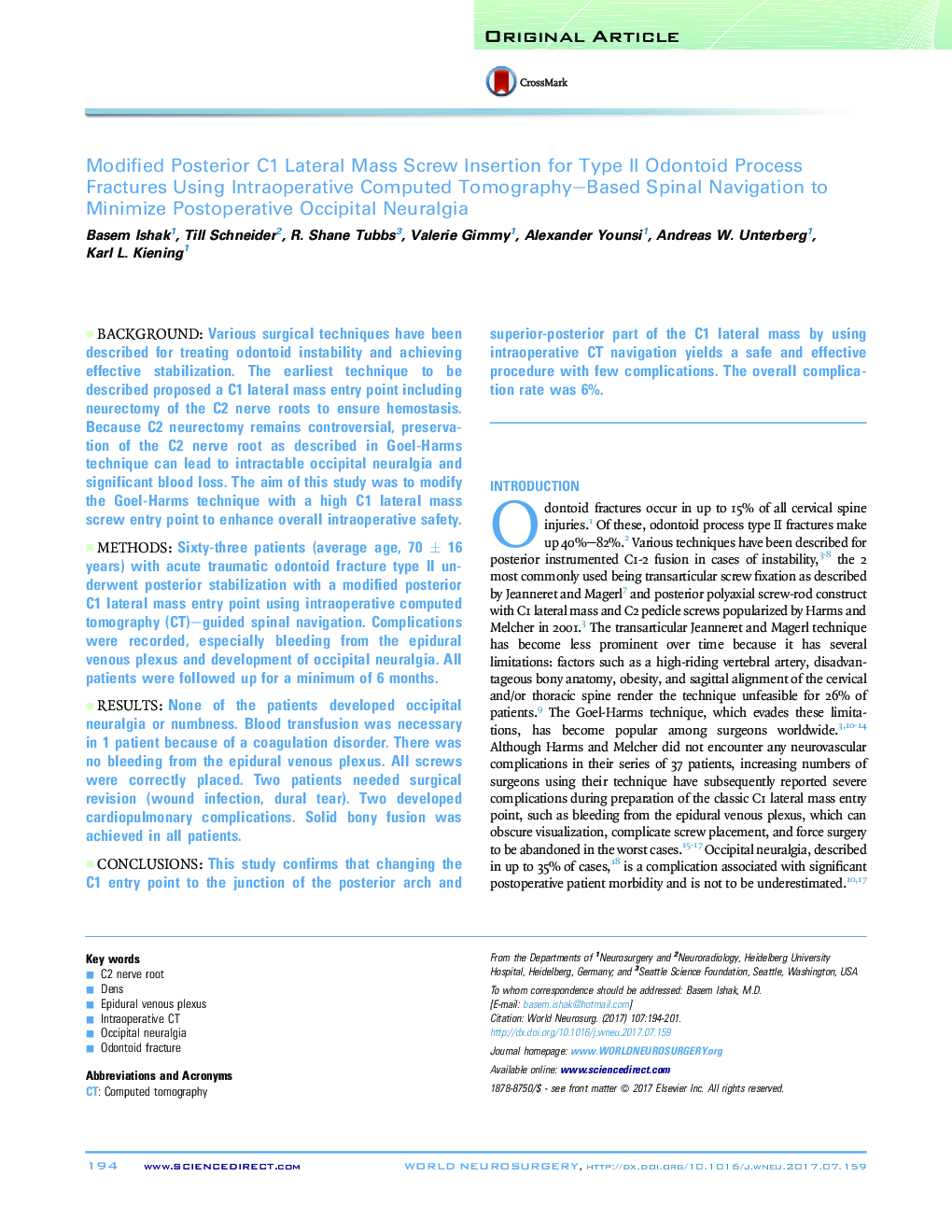| کد مقاله | کد نشریه | سال انتشار | مقاله انگلیسی | نسخه تمام متن |
|---|---|---|---|---|
| 5633873 | 1581448 | 2017 | 8 صفحه PDF | دانلود رایگان |

BackgroundVarious surgical techniques have been described for treating odontoid instability and achieving effective stabilization. The earliest technique to be described proposed a C1 lateral mass entry point including neurectomy of the C2 nerve roots to ensure hemostasis. Because C2 neurectomy remains controversial, preservation of the C2 nerve root as described in Goel-Harms technique can lead to intractable occipital neuralgia and significant blood loss. The aim of this study was to modify the Goel-Harms technique with a high C1 lateral mass screw entry point to enhance overall intraoperative safety.MethodsSixty-three patients (average age, 70 ± 16 years) with acute traumatic odontoid fracture type II underwent posterior stabilization with a modified posterior C1 lateral mass entry point using intraoperative computed tomography (CT)-guided spinal navigation. Complications were recorded, especially bleeding from the epidural venous plexus and development of occipital neuralgia. All patients were followed up for a minimum of 6 months.ResultsNone of the patients developed occipital neuralgia or numbness. Blood transfusion was necessary in 1 patient because of a coagulation disorder. There was no bleeding from the epidural venous plexus. All screws were correctly placed. Two patients needed surgical revision (wound infection, dural tear). Two developed cardiopulmonary complications. Solid bony fusion was achieved in all patients.ConclusionsThis study confirms that changing the C1 entry point to the junction of the posterior arch and superior-posterior part of the C1 lateral mass by using intraoperative CT navigation yields a safe and effective procedure with few complications. The overall complication rate was 6%.
Journal: World Neurosurgery - Volume 107, November 2017, Pages 194-201